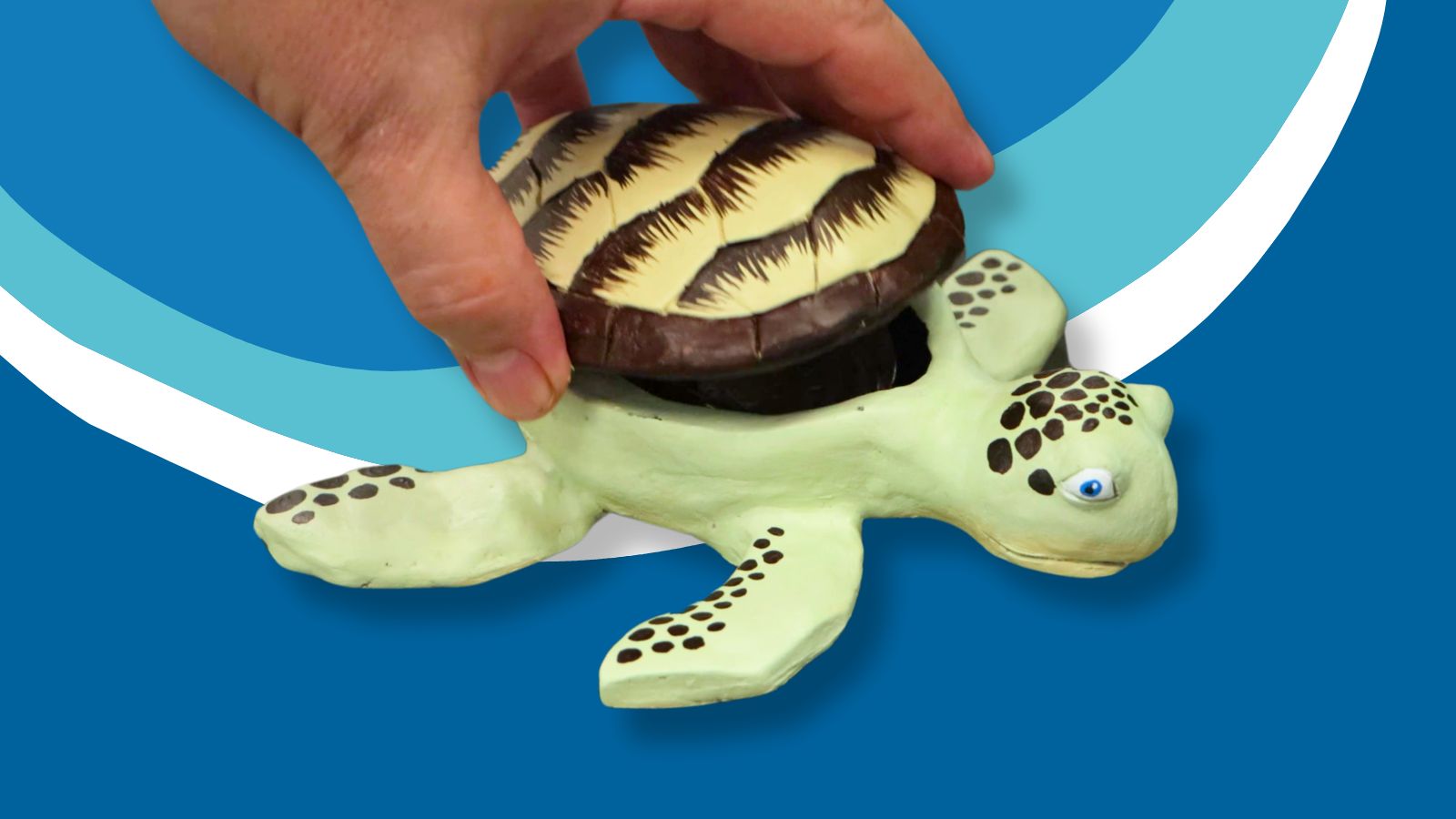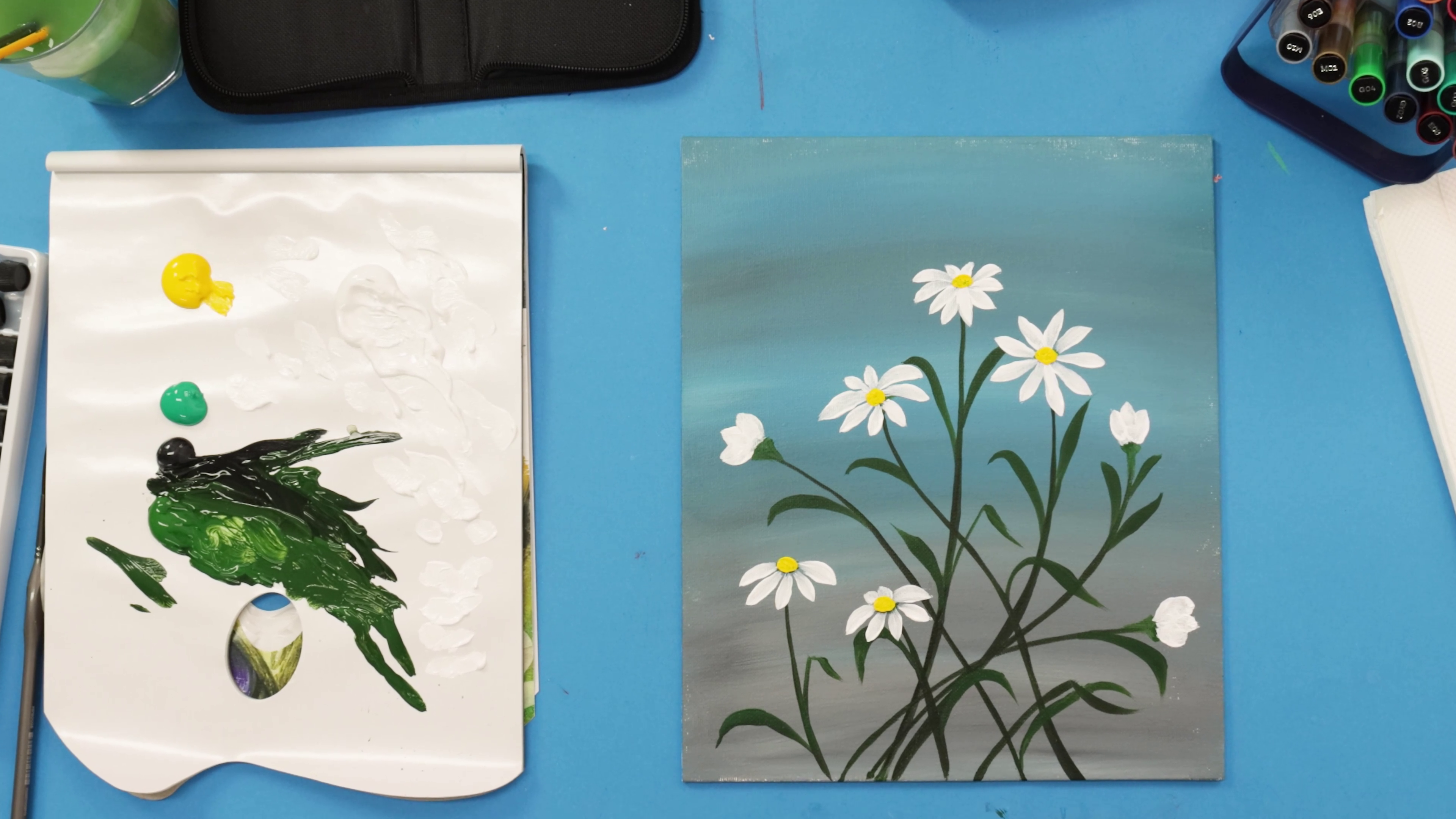Sculpt a polymer clay beetle
Grab your clay tools and bring a beetle sculpture to life. In this video we show you how to plan and sculpt a detailed Hercules beetle using a clay press and polymer clay. Check out the lesson PDF!
Step 1. Creating the armature
The base for the armature in this project is mango wood from the base of a cloche. Print out the armature guide on page 7 to A3 sizing and follow the steps below:
1) Cut out the footing template and tape it into position on the base. Use a drill with a 3mm bit and drill in the 6 holes. Make sure you drill these holes in at an angle as this will hold the armature in.
2) Straighten out a wire coat hanger and use a pair of flat nose pliers to create the leg pieces by laying each set over the armature guide. Fit the leg pieces into the base and then use tie wire to bind them together. Refer to the armature guide to ensure the legs are at the correct spacing.
3) Use more coat hanger wire and and bend the shape for the side profile. Cut the ends to the desired size and bind it to the legs.
4) Roll aluminium foil into a ball and compact it tightly then wrap it with adhesive tape. Ensure it fits well inside the profile views on page 8. Bind it onto the armature with tie wire.
5) Create a couple of strands of wire to support the thin bits of clay that will become the antenna.
Step 2. First blocking in
Once the armature has been created we can add the initial layer of clay.
Follow the steps below:
1) Pack clay into the underside of the model. Push the clay into any voids so there will be no pockets of air. Smooth off the clay on the underside so it is slightly convex in shape.
2) Create 6 little tubes and place them under the body to suggest the legs. Add 6 little pieces onto the top of each leg where it meets the body and smooth it into the tubes on the underside.
3) Create 3 sheets through the clay press on setting 5. Cut the edge of each sheet straight and lay the 3 sheets on top of each other so that they are stepped at a distance of 5mm between each step, lay these onto the back underside of the beetle and wrap it all up over the beetles body.
4) Create another sheet and lay it over the top side of the beetle and blend it into the sides.
5) Pack clay around the head area and over the horns and then cut away the clay using a hobby knife so that there is approximately 2mm of clay remaining.
The first blocking in is complete and you can now bake the model at this stage. Follow the instructions on the packaging. Baking times will vary depending on the amount of clay you use, but for a guide bake the clay at 120 130 degrees .
Allowing 30 minutes baking for every 5mm of clay.
Step 3. Sculpting the top coat
For this step we suggest you refer to the appropriate images for each specific part you are sculpting. Remove the model from the oven and allow it to cool.
Once its cool to the touch follow the steps below:
1) Pack a good amount of clay around the head and horns of the beetle. Use a hobby knife to carve away the excess clay around the horns and behind the head. Keep slowly removing clay in small amounts constantly looking at the model from every angle until the head looks correct.
2) Create 2 balls for the eyes and apply them into position. Create a tube and run a very thin tube from behind one eye over the bottom horn to behind the other eye. Create a thin triangle and blend it onto the top part of the bottom horn and then create a hair texture over it.
3) Add 2 little nodes on the bottom horn and 2 nodes on the top horn. Make sure they are conical shaped and blend the edges in.
4) Create the mouth by pressing a small block of clay onto the underside of the head and fashion it into a triangular shape and put a cut through the middle so it looks like a fountain tip nib then flatten the tip.
5) Press clay around the wire part of the antenna and carve off the excess so that there is roughly 1 mm of clay around the armature wire.
6) Wrap clay around the legs and press it tightly so there are no pockets of air. Carve the clay away so that the legs look to be the correct thickness or to scale.
7) Create little cone shapes of clay and apply them to the legs in the same way as the teeth were done on the horns. Repeat this process for the other legs. Create some feet by blending a flat piece of clay onto the bottom of the leg. Divide the feet into two toes.
8) Press a large sheet through a clay press set to setting 5. Lay this over the beetles back and press it on so that there are no pockets of air. Use a hobby knife to cut around the body. This point will lie around half way up the body but refer to the reference images to get the position of it correct.
9) Use a point tool to create a line down the back of the beetle to suggest where the two wings meet.
10) Radius the top corner of each wing each where they meet in the middle and remove the clay. 11) Roll the handle of a paint brush over the sculpture to smooth it all out.
Follow the instructions on the packaging. Baking times will vary depending on the amount of clay you use, but for a guide bake the clay at 120 130 degrees. Allowing 30 minutes baking for every 5mm of clay.
Material List
- Polymer Clay Press Signature
- Make n Bake Polymer Clay Signature 400g (14.1oz) - Beige
- Mini Modelling Tools Signature 10pc
- Clay Tool Set Signature 11pce




































